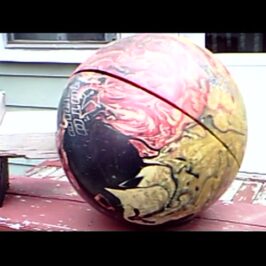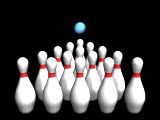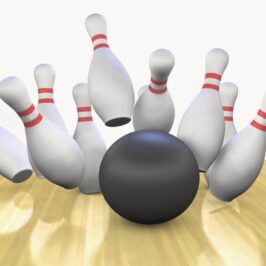 There are generally two types of bowling: Rolling the ball in a straight line at the pins or “straight ball bowling”, and rolling the ball in a curved or hooking pattern at the pins or “hook ball bowling”. If you want a history of the hook ball, there is an article called Bowling Ball Evolution that goes into detail about how and why hook came about.
There are generally two types of bowling: Rolling the ball in a straight line at the pins or “straight ball bowling”, and rolling the ball in a curved or hooking pattern at the pins or “hook ball bowling”. If you want a history of the hook ball, there is an article called Bowling Ball Evolution that goes into detail about how and why hook came about.
From Wikipedia, the free encyclopedia:

 A hook in ten-pin bowling is a ball that rolls in a curving pattern (versus straight). The purpose of the hook is to give the ball a better angle at the 1-3 pocket (right-handers) or 1-2 pocket (left-handers.) When a ball is rolled straight, hitting the pocket must be precise. By hooking the ball, the ball will hit the pins with more force, producing better carry – especially on the 5-pin during a strike ball. Straight roll – even when it hits the pocket, will tend to leave a tap, such as the 5-pin on a light hit, or the 10-pin if the ball was just slightly right of the head pin. A hook ball can create strikes with less precise hits at the pocket.
A hook in ten-pin bowling is a ball that rolls in a curving pattern (versus straight). The purpose of the hook is to give the ball a better angle at the 1-3 pocket (right-handers) or 1-2 pocket (left-handers.) When a ball is rolled straight, hitting the pocket must be precise. By hooking the ball, the ball will hit the pins with more force, producing better carry – especially on the 5-pin during a strike ball. Straight roll – even when it hits the pocket, will tend to leave a tap, such as the 5-pin on a light hit, or the 10-pin if the ball was just slightly right of the head pin. A hook ball can create strikes with less precise hits at the pocket.
A hook ball can also help the bowler shape the shot on challenging oil patterns.
In other games of bowling, such as duckpin bowling or candlepin bowling, a hook is virtually non-existent for experienced bowlers since the ball is much smaller than in ten-pin bowling, and rolls too fast to the pins to allow a hook to develop.
. . .







Leave a Reply